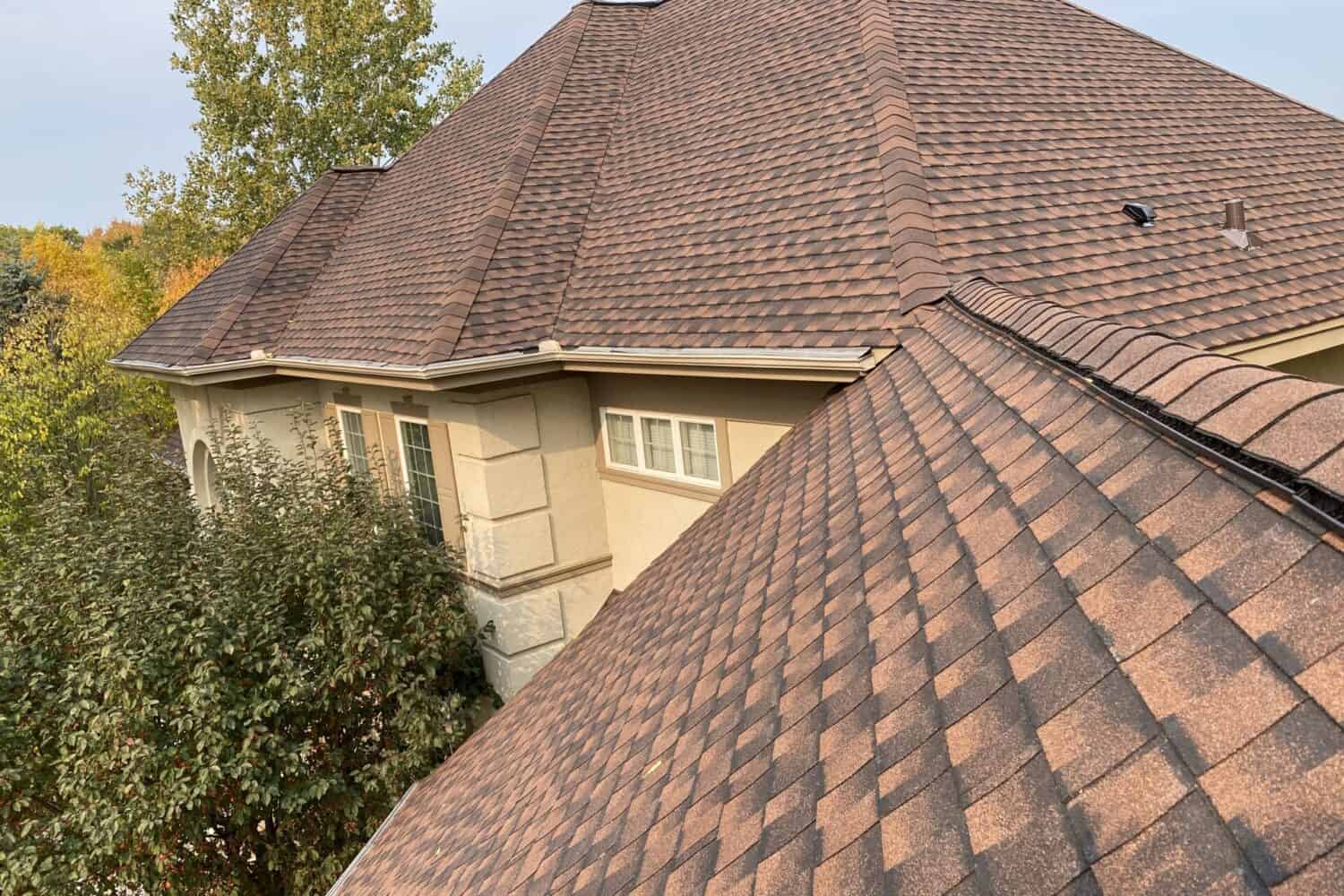Choosing the ideal roof types for Minnesota homes is an important homeowner decision, given the state’s varied and frequently demanding weather conditions. This article aims to equip you with the essential knowledge to decide the best roof types and materials to use by providing a detailed analysis of their advantages and disadvantages. By understanding each option’s distinct qualities and attributes, you can make a well-informed decision that caters to both the visual appeal and practical requirements of your home.
Best Roofing Materials for Minnesota
The weather in Minnesota, typified by frigid winters, substantial snow accumulation, and sporadic intense storms, calls for roofing materials capable of enduring extreme weather conditions. The best shingles for Minnesota are asphalt ones due to their strength, affordability, and easy accessibility. Metal roofs in Minnesota are another suggested alternative, given their long lifespan and ability to repel snowfall. Cedar shakes and shingles offer a natural and rustic appearance but may require more maintenance. Additionally, synthetic roofing materials, such as composite or rubber, provide durability and resistance to extreme temperatures. Below we explore the pros and cons of each roofing material for a Minnesota roof:
Asphalt Shingles
Pros:
- Affordability: Asphalt shingles are cost-effective and widely available.
- Versatility: They come in various colors and styles, enhancing aesthetic options.
- Ease of Installation: Installation is relatively straightforward, reducing labor costs.
Cons:
- Lifespan: While durable, asphalt shingles have a shorter lifespan compared to some other materials.
- Susceptibility to Weather: Extreme weather conditions, common in Minnesota, can impact longevity.
Metal Roofing
Pros:
- Durability: Metal roofs have a long lifespan and are resistant to weather extremes.
- Energy Efficiency: Reflective coatings enhance energy efficiency, reducing cooling costs.
- Snow Shedding: Metal roofs shed snow easily, preventing the formation of ice dams.
Cons:
- Cost: Initial installation costs can be higher than other materials.
- Noise: Some may find metal roofs noisy during heavy rain or hail.
Cedar Shakes or Shingles
Pros:
- Natural Aesthetic: Offers a rustic and natural appearance.
- Insulation: Cedar provides natural insulation, reducing energy costs.
- Sustainable: A renewable and eco-friendly option.
Cons:
- Maintenance: Requires regular maintenance to prevent rot and insect infestations.
- Cost: Initial costs and maintenance can be higher compared to other materials.
Synthetic Materials (Composite, Rubber)
Pros:
- Durability: Synthetic materials are resistant to weather and have a long lifespan.
- Low Maintenance: Typically require minimal maintenance.
- Variety: Available in various styles and colors.
Cons:
- Cost: Initial costs can be higher compared to asphalt shingles.
- Appearance: Some may prefer the natural appearance of other materials.
Each roofing material has its own distinct advantages and disadvantages, and the choice depends on factors such as budget, aesthetic preferences, and the specific climate challenges faced in Minnesota. Consulting with a roofing professional can provide tailored advice based on individual needs and priorities for the best roof for Minnesota climate.
How To Protect Your Roof During Winter Months In Minnesota?
Winter in Minnesota can be particularly challenging for roofs, with heavy snow, ice dams, and freezing temperatures. Begin by removing any clutter, including leaves and twigs. Ensure proper insulation to prevent heat loss and ice dam formation. Regularly inspect your roof for any signs of damage and promptly address issues like missing shingles or leaks. Keep gutters clean to facilitate proper drainage and reduce the risk of ice buildup. Consider installing ice and water shields to provide an extra layer of protection. Lastly, trim overhanging branches to prevent potential damage from heavy snow and ice accumulation.
How Can You Increase The Longevity Of Your Roof In Minnesota?
To increase the longevity of your roof in Minnesota, prioritize regular inspections for damage, clear debris to prevent moisture retention, and ensure proper insulation and ventilation. You should regularly maintain your gutters to keep them clean, trim any overhanging branches, consider installing ice and water shields, opt for durable roofing materials, and deal with any roof issues as they arise. By following this advice, you should be able to increase the lifespan of your roof and enhance its overall durability.
Final Thoughts
Deciding on an appropriate roofing material for your Minnesota home requires understanding weather conditions, the lifespan of roofing materials used, and general roof upkeep. Regular inspections and proactive maintenance further contribute to the overall durability of the roofing material you choose, ensuring it can weather the storms, quite literally, for years to come.
By considering the advantages and disadvantages associated with various roof materials and adopting some strategies to protect your roof during the harsh Minnesota climate, you can guarantee that your investment lasts over time. Regardless of whether you prefer the timeless charm offered by asphalt shingles, the durability in metal, or cedar’s innate aesthetic appeal, we hope we’ve provided you with sufficient information allowing you to make a well-informed decision specific to your home’s requirements. If you are looking for help choosing the best roof material for Minnesota, contact the experts at Summit Construction Group.

